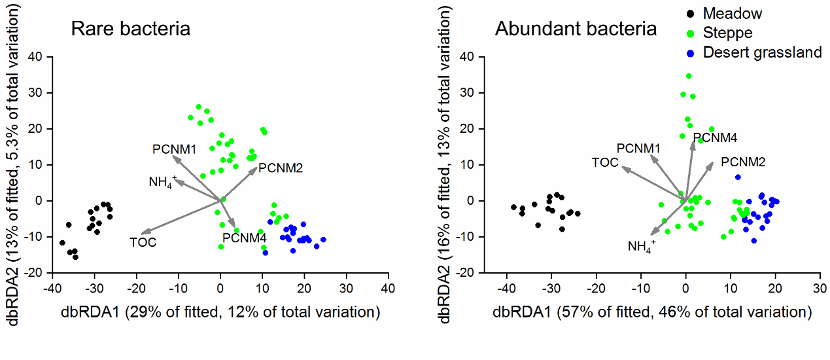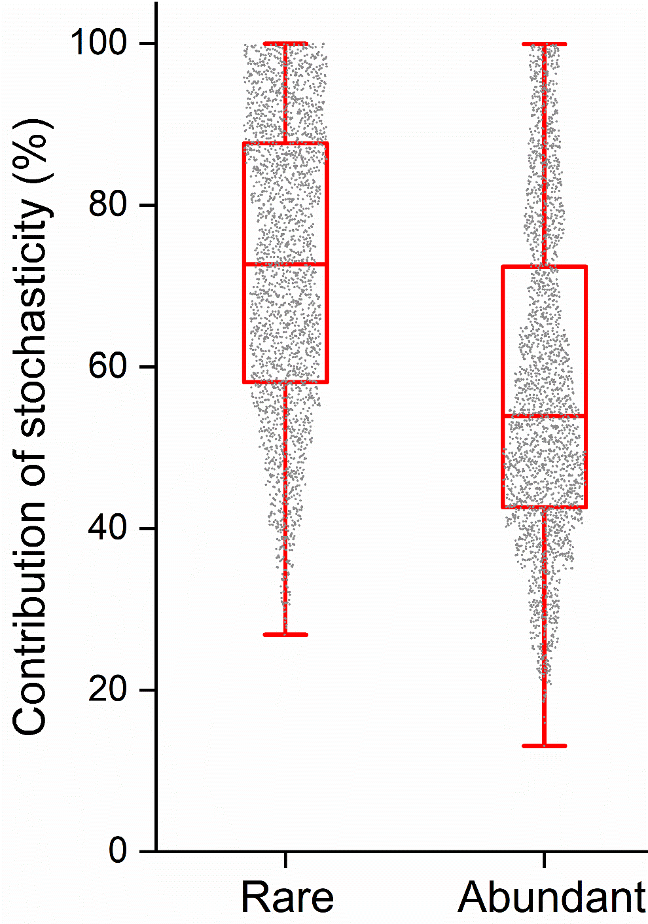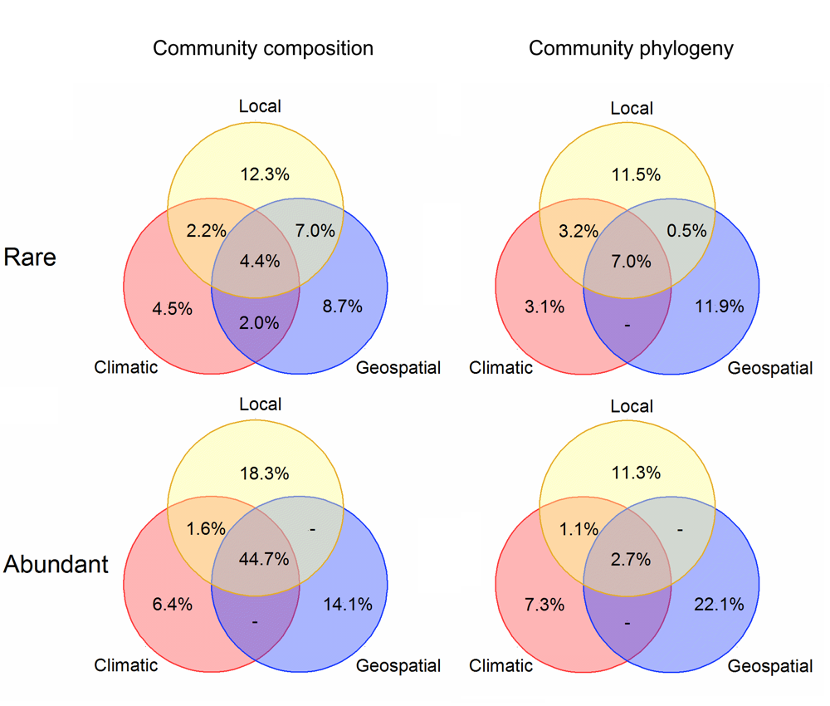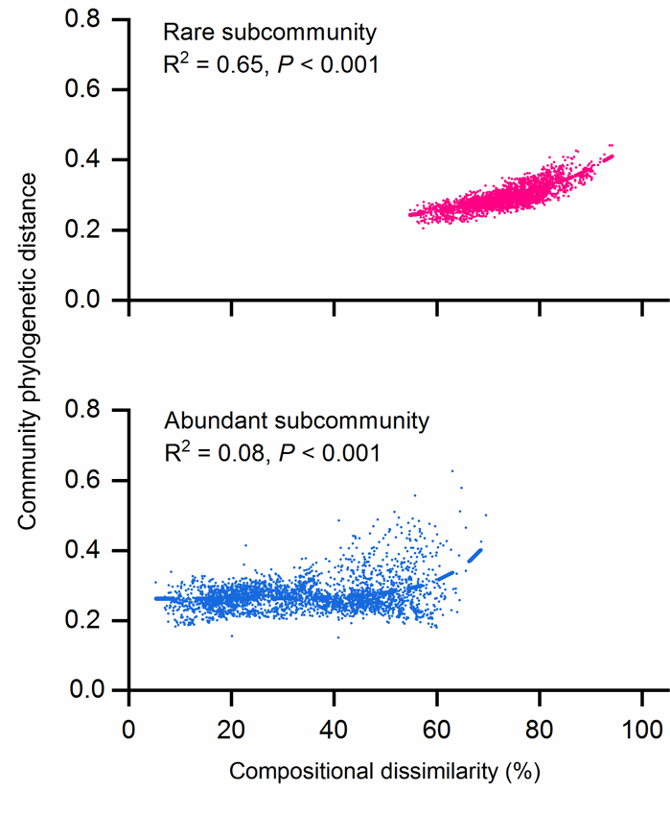The rare biosphere contains microorganisms that present in low abundance. These rare microorganisms represent the majority of the Earth's biodiversity and are responsible for ecosystem multifunctionality and act as the “seed bank” during ecological restoration. However, the diversity and biogeography of rare microorganisms are still poorly understood in the terrestrial ecosystem.
In recent research, led by Professor Weidong Kong at the Institute of Tibetan Plateau Research, Chinese Academy of Sciences, the biogeography and the assembly mechanisms of rare and abundant bacteria are compared across a 1200 km transect in the Tibetan Plateau. The results demonstrated that both rare and abundant bacteria exhibit similar community structure changing patterns across the meadow-steppe-desert transect at both community composition and phylogeny levels (Fig. 1). However, rare bacteria are more strongly influenced by stochasticity (72%) than abundant bacteria (57%, Fig. 2). Environmental factors explained 41% of the community composition in rare bacteria, lower than that in abundant bacteria (80%,Fig. 3).
In contrast, environmental factors explained 36% of the community phylogeny in rare bacteria, higher than that in abundant bacteria (29%). Geospatial distance and local environmental factors contributed equally to the community phylogeny of rare bacteria (11.5% and 11.9%, respectively), whereas the geospatial factors explained a larger proportion of the community phylogeny (22.1%) than local factors (11.3%) in abundant bacteria. Furthermore, the community composition and phylogeny of abundant bacteria are decoupled during environmental changes (R2 = 0.08). In contrast, the two are tightly coupled in rare bacteria (R2 = 0.65, Fig. 4).
This study reveals the biogeography and community assembly of rare bacteria in terrestrial ecosystems, proposes the joint influence of environmental factors and geospatial factors on the distribution of rare bacteria in soil. This study provides novel insights into the functions of rare bacteria in maintaining ecosystem structural and functional integrity.
This work is recently published by Environmental Microbiology, titled “Distinct assembly mechanisms underlie similar biogeographical patterns of rare and abundant bacteria in Tibetan Plateau grassland soils”. Associate Professor Mukan Ji is the first author, and Professor Weidong Kong is the corresponding author. This study is jointly supported by the Strategic Priority Research Program of the Chinese Academy of Sciences, the Key Program of the Chinese Academy of Sciences (grant no. XDA19070304, QYZDB-SSW-DQC033, and XDA20050101), and the National Natural Science Foundation of China (41771303).

Fig. 1 The variation of bacterial community composition explained by local, climatic and geospatial factors.

Fig. 2 The contribution of stochasticity to the community assembly of rare and abundant bacteria

Fig. 3 The variation of bacterial community composition and phylogeny explained by local, climatic and geospatial factors.

Fig. 4 Correlations between the community composition and phylogeny for rare and abundant bacteria


